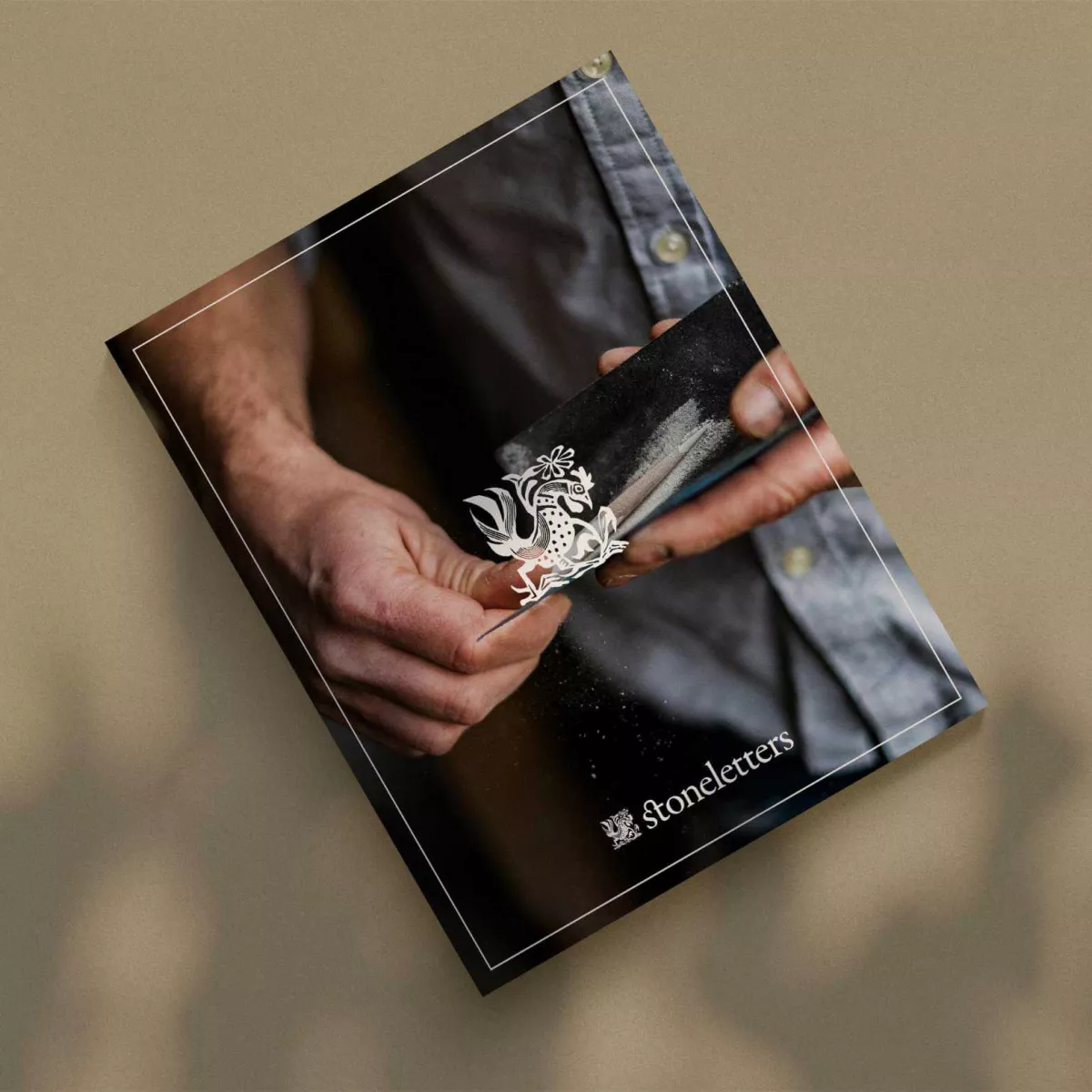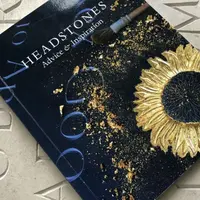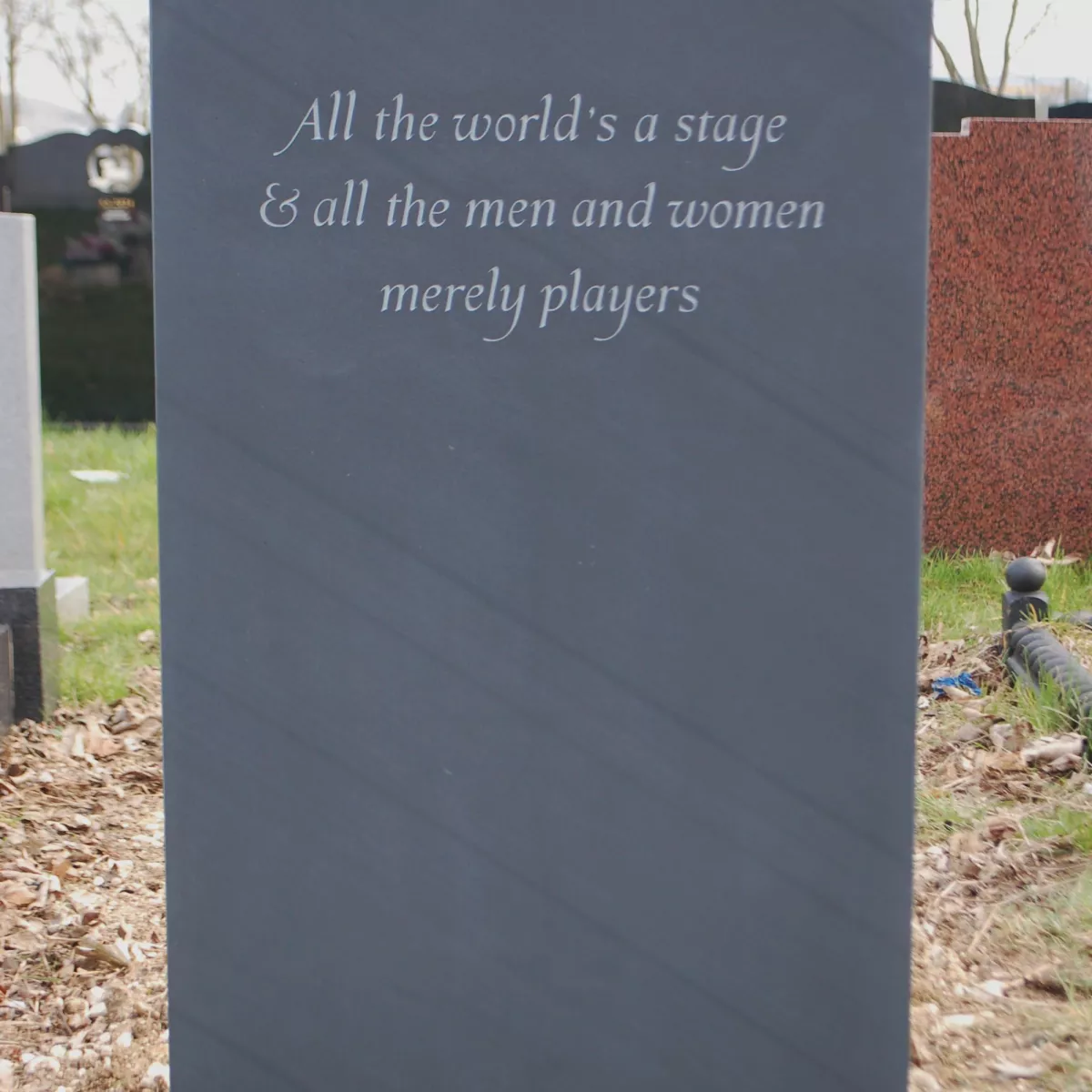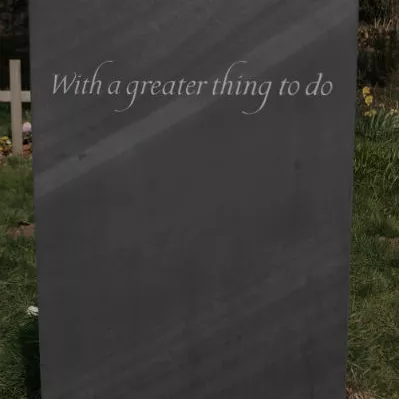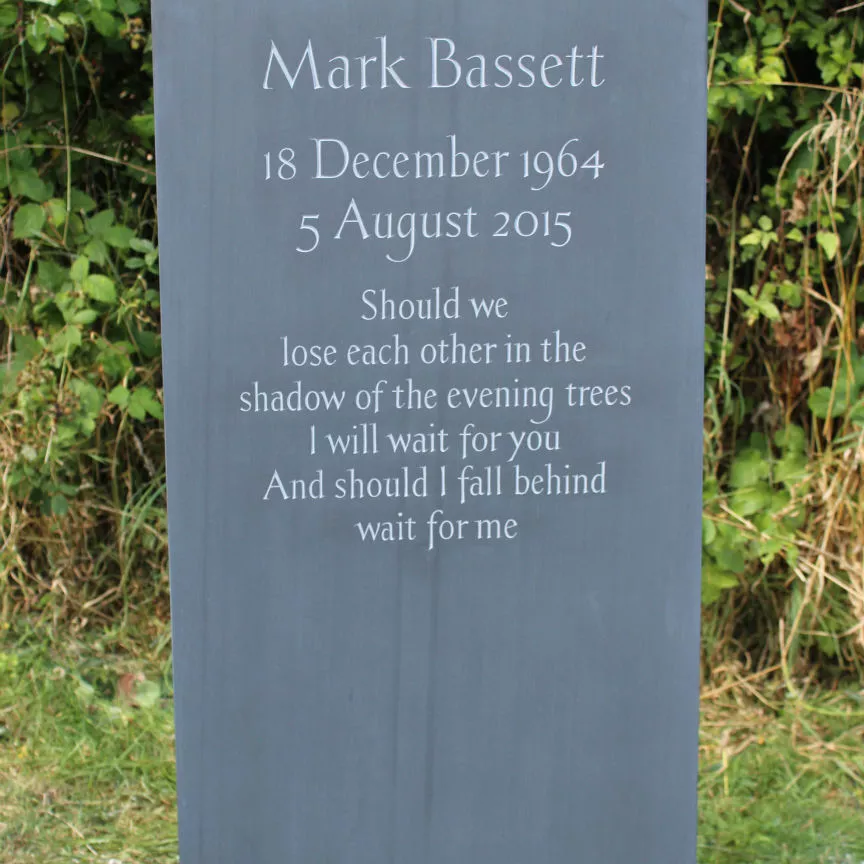By using this website, you agree to our privacy policy
×What is usually put on a Headstone?
What is usually put on a headstone? How do I choose a headstone inscription? These are the first questions people often ask, and a good place to begin when choosing a headstone.
What is usually put on a headstone? What do you put on a headstone inscription?
These are often the first questions people ask when they visit. In this article, I share years of experience in helping people choose the right words.
Choose the wording before the material or size of the headstone
The very difficult decision of choosing the wording to put on a headstone is often put off until the material has been selected and the shape and size of the stone agreed. But this is rarely a good idea. The words should be the starting point. Sometimes the client will have a very clear idea right at the start and the rest is easy. The shape of the stone will be designed to fit the inscription and the material chosen to suit the length of the inscription.
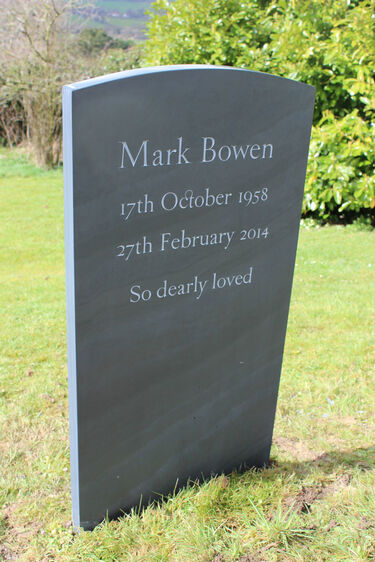
1. Start with the name and dates
Most people haven’t a clue where to start. One misconception, for example, is one should start with ‘in loving memory’ or ‘cherished memories of’ and so forth. Our advice is to start with the name and dates, the rest is additional and optional even the dates may be optional. Some cemeteries insist the dates are inscribed, and it’s probably a good idea; the headstone is not just a marker of a grave but a record of a life, and it could lead to confusion if the inscription is particularly cryptic.
Often, the names and dates are enough.
A quick word on dates:
Normally the years are enough, for example, 1910-1990, but using the day and the month too are fine as long if there is space.
27th December 2030 for instance, is a long line of text, and if it doesn’t suit the shape of the inscription it should be shortened.
27. 12. 2013 does not look nice and when combined with the date of birth can look rather numeral-heavy and digital.
A common compromise is 27 Dec 2030, and if that suits the shape of the wording better then it’s just as clear as using the full word.
Much of our work is for children, when the day and the month can be very significant.
Generally, though as time moves on and the decades roll by, the full dates become less important and the rest of the inscription is what becomes the focal point. It needs to be remembered that the stone will outlive the person who commissions it and it, therefore, becomes a point of interest for a stranger reading it. And it’s a fact the trend of reading churchyard inscriptions is growing. This is good news, it’s partly what the stone is for, and it gives the commissioner a sense of duty to make the wording stand the test of time.
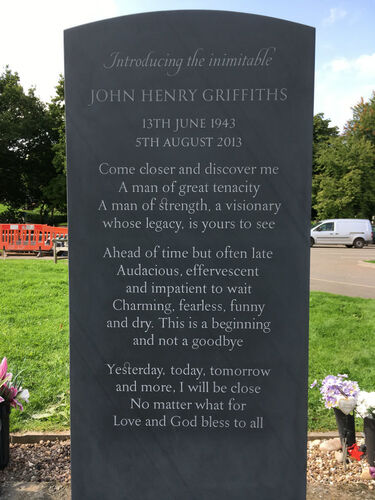
2. Choose a headstone inscription that adds interest to the general public
If the wording doesn’t say much more than ‘beloved mum and grandmother’, it will not really appeal to anyone else, not that this always matters, but the great majority of mums and grannies are indeed beloved and so the words rarely add anything to the interest of the inscription except the commissioner. My clients must have the words they want and I will not interfere too much but I am simply obliged to point out alternatives and explain the contribution the headstone could make to the churchyard and to a stranger reading the headstone, which after all, is in a public space.
For example, when a stranger reading the words on a stone can take something positive away with them, the inscription has a purpose and it lives on and on; it never stales. This is what I would like my clients to consider. A poem or a quotation achieves this. It doesn’t have to be impersonal. We find more and more people ordering their own headstones in advance, and the chosen words are always so positive and uplifting.
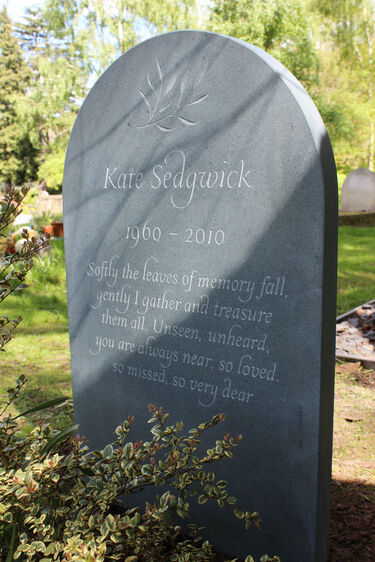
3. The choice of headstone wording will be very personal
We find more and more people ordering their own headstones in advance, and the chosen words are always so positive and uplifting. This person who commissions their own gravestone tends to be advanced in years.
But to the parent who is considering a headstone for their child, the memorial becomes a different thing and serves a different purpose. It becomes an object for them personally, a focal point to grieve and remember. They will live the remainder of their long lives with their memories of the child and the stone serves as a pillar of their love.
A parent will pick words that re-enforce their memories; character descriptions and traits.

4. Take your time
The point here is that there is no right and wrong, but the exploration of ideas is so important and will always lead to the best wording. One important factor here is time. It can take years to find the right words, and of course, sometimes there are no right words.
But generally, as time moves on the wording becomes clear.
This journey is essential, and we find that often it is a healing one. The maker should under no circumstances put the client under pressure to find these words, nor should the church or their family. The words are to be carved on stone and there is something pure and solid about this; it must not be rushed. However, when the words are right the client always knows this, and then I know it is right.

5. Less is more: keep it simple if possible
Getting the right number of words is important too. ‘Less is more’, but ‘less can also be more challenging’.
The natural impulse is to say as much as you can, but then there is more chance of leaving something off.
It’s a bit like inviting the whole village to a party and leaving one person out by mistake. So it’s often best to opt for simplicity. There is more strength in one word than there is in three. The two other words will dilute the first and so that word loses strength and power. For example ‘Joe Blogs, 1910 – 1990, So loved, Always in our hearts’ is fine, but when ‘Always in our hearts’ is removed, the ‘so loved’ gathers strength and gravity. ‘Always in our hearts’ does not necessarily add anything to the inscription but may, in fact, weaken it.
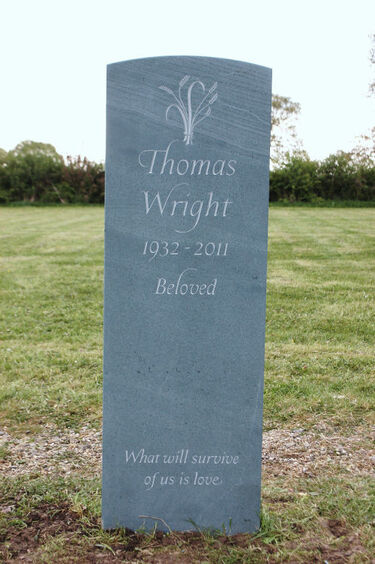
6. Leave something to the imagination
We once made a headstone for someone with the simple epitaph: ‘a free spirit’. This is descriptive but could have various meanings.
7. Try not to be too sentimental
Although not always possible, it is a good idea to try to control emotion when searching for the right words. When finding suitable words for a child, the impulse is to dignify the situation by displaying emotion and even pain and sadness. But this is perhaps not a good idea, because as time moves on, it’s the positive moments that one will instinctively remember, not the sad times.
The headstone should celebrate life, however short, and needs to be uplifting.

8. Be creative with the headstone and don’t copy everyone else!
These words of mine are meant as a guide, and to encourage people to think outside the box; to abandon the current conventions and trends and to think for themselves. There may be pressure from family or a desire to fit in with what is there, but the stone will be there for a very long time and the inscription deserves a degree of thought. I recently visited a cemetery in Dublin; each grave was inscribed with the name date and their address, which I had wrongly assumed was a compulsory cemetery regulation, but no, it was simply a trend; they’ve put the address on, so I’d better do the same. You end up with a burial ground full of rather dull inscriptions. On the other hand if one was to visit the great cemeteries of Highgate, Kensall Green or Richmond, you will find a different trend; One that requires the commissioner to think outside the box. It’s full of wonderful inscriptions, and so it is a fascinating place to visit.
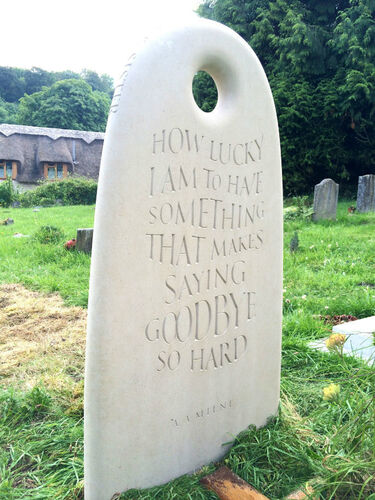
9. Ask for help and advice
We have years of experience and I can guide you through the process of choosing the wording. Hannah has compiled lists of epitaphs which may also help.
Alternatively please make an appointment to visit the workshop, where there are always lots of headstones in progress. Nothing beats a face-to-face meeting.
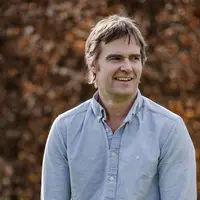
Fergus Wessel
Designer and letter-carver
Fergus created Stoneletters Studio in 2003, after training at the Kindersley Workshop. He is a member of the prestigious Master Carver's Association.


Request our free booklet today
- © 2025 Stoneletters
- Legal notice
- Privacy policy
- Disclaimer
